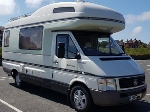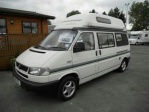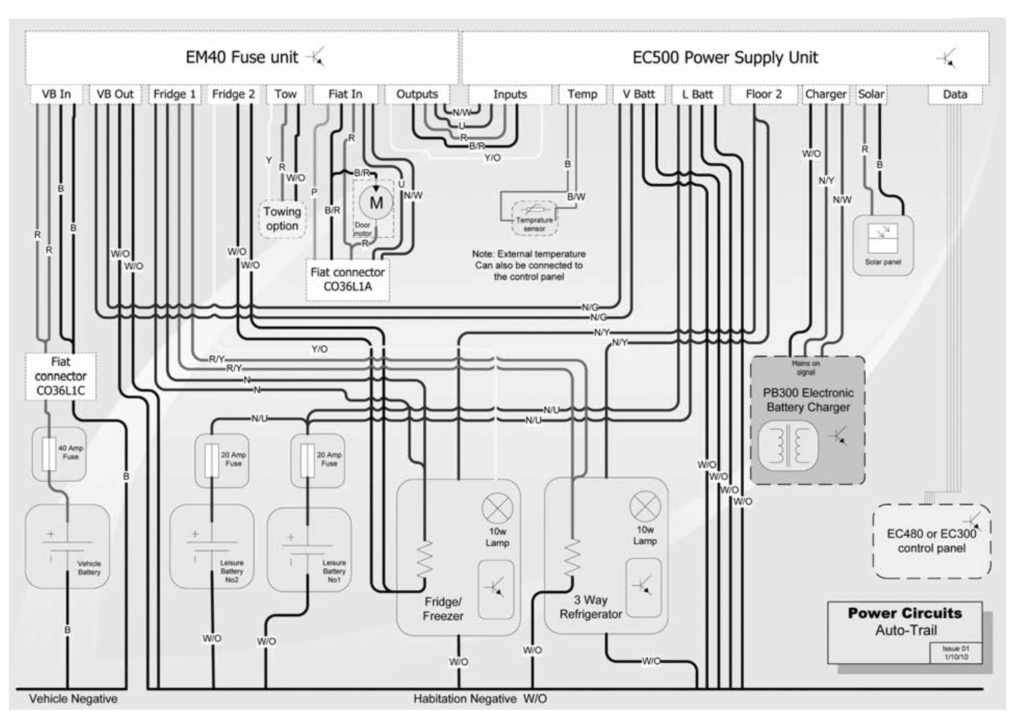Battery to Battery Charger
+9
Andril1954
rogerblack
Paulmold
brodco
shargrea
mikejack
Peter Brown
-mojo-
bernieproberts
13 posters
The Auto-Sleeper Motorhome Owners Forum (ASOF) :: Auto-Sleeper Motorhome Forums :: Auto-Sleeper "Coachbuilt Motorhomes" Forum
Page 1 of 2
Page 1 of 2 • 1, 2 
 Battery to Battery Charger
Battery to Battery Charger
I have a 2013 Nuevo ES and I am thinking of installing a CTEK DC to DC battery charger. I am told it will charge the leisure battery a lot quicker and extend the battery life which would be good for camping without mains electricity. Looking at the details it involves one cable going to vehicle battery + from the unit another going to the leisure battery + and another cable going to earth. Has anyone installed a battery to battery charger in parallel with the Sargent equipment provided in the motorhome?
Bernie
Bernie
_________________
Bernie

bernieproberts- Member

-

Posts : 39
Joined : 2011-08-17
Member Age : 79
Location : Tunbridge Wells
Auto-Sleeper Model : 2013 Nuevo ES
 Re: Battery to Battery Charger
Re: Battery to Battery Charger
I considered one - until I saw the price! Perhaps you can get them cheaper but the ones I looked at were just under £200!
I rate CTEK products highly and own several of their mains chargers, but there are cheaper products for battery to battery charging - E.g. the Battery Master, which IIRC several other forum members use.
I rate CTEK products highly and own several of their mains chargers, but there are cheaper products for battery to battery charging - E.g. the Battery Master, which IIRC several other forum members use.

-mojo-- Member

-

Posts : 4566
Joined : 2012-08-04
Member Age : 24
Location : Southeast
Auto-Sleeper Model : Trooper
Vehicle Year : 2006
 Re: Battery to Battery Charger
Re: Battery to Battery Charger
bernieproberts wrote:I have a 2013 Nuevo ES and I am thinking of installing a CTEK DC to DC battery charger. I am told it will charge the leisure battery a lot quicker and extend the battery life which would be good for camping without mains electricity. Looking at the details it involves one cable going to vehicle battery + from the unit another going to the leisure battery + and another cable going to earth. Has anyone installed a battery to battery charger in parallel with the Sargent equipment provided in the motorhome?
Bernie
I must be missing something here as I can't see the benefit of charging the leisure battery via a dc to dc charger over charging it via the existing split charge relay? The energy source (alternator) is the same in both cases and the Sargent unit manages the charge rate.
Peter

Peter Brown- Donator

-

Posts : 10632
Joined : 2012-11-10
Member Age : 72
Location : Staffs
Auto-Sleeper Model : Broadway EB
Vehicle Year : 2016
 Battery to Battery Charger
Battery to Battery Charger
Peter
From what I have been told the Battery to Battery charger has this advantage over the Split Charger System. It would charge the battery in 2 hours compared with the 12 hours required by the split charger system. This is because it maintains maximum current of 20 amps into the battery while the current from the split charge system drops. It also provides plenty of current to make sure the leisure battery is fully charged while running the fridge on 12 volts.
Bernie
From what I have been told the Battery to Battery charger has this advantage over the Split Charger System. It would charge the battery in 2 hours compared with the 12 hours required by the split charger system. This is because it maintains maximum current of 20 amps into the battery while the current from the split charge system drops. It also provides plenty of current to make sure the leisure battery is fully charged while running the fridge on 12 volts.
Bernie
_________________
Bernie

bernieproberts- Member

-

Posts : 39
Joined : 2011-08-17
Member Age : 79
Location : Tunbridge Wells
Auto-Sleeper Model : 2013 Nuevo ES
jwells likes this post

Peter Brown- Donator

-

Posts : 10632
Joined : 2012-11-10
Member Age : 72
Location : Staffs
Auto-Sleeper Model : Broadway EB
Vehicle Year : 2016
 Battery to Battery Charger
Battery to Battery Charger
From what I see in my handbook and talking to Sargent the EC328 250 volt battery charger is a three stage battery charger which delivers maximum current. However the vehicle alternator charging system is a conventional split charger relay system.
Bernie
Bernie
_________________
Bernie

bernieproberts- Member

-

Posts : 39
Joined : 2011-08-17
Member Age : 79
Location : Tunbridge Wells
Auto-Sleeper Model : 2013 Nuevo ES
 Re: Battery to Battery Charger
Re: Battery to Battery Charger
I've not looked at the CTEK product details at all, but if it really is able to maintain a charge rate of 20A into a partially charged battery, I doubt that it will do it much good - for a start it is going to have to raise the battery terminal voltage way above what is considered normal for leisure battery use.bernieproberts wrote:It would charge the battery in 2 hours compared with the 12 hours required by the split charger system. This is because it maintains maximum current of 20 amps into the battery while the current from the split charge system drops.
The Sargent EC325 did something similar, but it also disconnected the battery from everything else in the van while it was happening, so there was no chance of blowing any 12V appliances connected at the time. The EC325 also had an external battery temperature sensor so that it could prevent the battery from overheating by scaling back the charge rate if it started to get hot (though I confess I don't know if A-S actually fitted the remote sensor in their EC325 installations).
It ~sounds~ as if someone has exaggerated a little about what the device can do (perhaps to make a sale?). I have no doubt - based on previous experience of CTEK products - that it's a well-designed piece of kit, but I have doubts that it is quite as fantastic as the description that someone has given you.

-mojo-- Member

-

Posts : 4566
Joined : 2012-08-04
Member Age : 24
Location : Southeast
Auto-Sleeper Model : Trooper
Vehicle Year : 2006
 Re: Battery to Battery Charger
Re: Battery to Battery Charger
I have a sterling battery to battery charger fitted i have had it about 10yrs i moved it from my last van to my current van. It is very easy to fit i used starter cable from the battery via a 100amp maxi fuse to the charger under my seat and starter cable from charger to the chassis. And have never had a low battery since fitting it does indeed charge up the battery bank quicker than a split charge relay. This is the one i have link
Mike
Mike

mikejack- Member

-

Posts : 375
Joined : 2012-07-02
Member Age : 53
Location : Skelmersdale Lancashire
Auto-Sleeper Model : medallion
Vehicle Year : 1998
 Battery to Battery Charger
Battery to Battery Charger
Thanks Mike, that sounds good. I cannot believe that a battery to battery charger would damage the battery or motorhome equipment. The one I am looking at is a multi-step, fully automatic, charger with a battery temperature sensor that charges at a maximum of 14.4 volts, the same as the mains voltage charger in the Sargent EC328PSU. When you fitted yours did you run it in parallel with the Sargent split charge relay?
Bernie
Bernie
_________________
Bernie

bernieproberts- Member

-

Posts : 39
Joined : 2011-08-17
Member Age : 79
Location : Tunbridge Wells
Auto-Sleeper Model : 2013 Nuevo ES
 Re: Battery to Battery Charger
Re: Battery to Battery Charger
Hi Bernie my last van I built myself I had 2x110 amp batteries a 2.5kw inverter and a 750w microwave used for short periods to heat food. Kept that van for 10yrs and never had a problem with the batteries being ruined .Current Autosleeper uses the zig system so I do not know about the sargent on my zig system I just took the existing 30amp split charge fuse out when I fitted the b2b charger.
Mike
Mike

mikejack- Member

-

Posts : 375
Joined : 2012-07-02
Member Age : 53
Location : Skelmersdale Lancashire
Auto-Sleeper Model : medallion
Vehicle Year : 1998
 Re: Battery to Battery Charger
Re: Battery to Battery Charger
As I understand it (please correct me if I'm wrong), the conventional split charge relay simply connects the positive terminals of the two batteries together (when the engine is running), so that they both get charged by the alternator.
If so, then if the leisure battery has been run fairly low, then when the engine is started and the split charge relay turns on, there will be an enormous current flowing from engine battery to leisure battery (threatening to blow the fuse or melt the relay). The opposite could be the case if the engine battery had been drained (e.g. by an alarm).
One advantage of the battery to battery charger is that it would control this current.
Presumably if you fit a battery to battery charger, you would have to remove or disable the split charge relay ?
If so, then if the leisure battery has been run fairly low, then when the engine is started and the split charge relay turns on, there will be an enormous current flowing from engine battery to leisure battery (threatening to blow the fuse or melt the relay). The opposite could be the case if the engine battery had been drained (e.g. by an alarm).
One advantage of the battery to battery charger is that it would control this current.
Presumably if you fit a battery to battery charger, you would have to remove or disable the split charge relay ?

shargrea- Member

-

Posts : 117
Joined : 2012-06-20
Member Age : 60
Location : Cheshire
Auto-Sleeper Model : Topaz
Vehicle Year : 2001
 Re: Battery to Battery Charger
Re: Battery to Battery Charger
bernieproberts wrote:I cannot believe that a battery to battery charger would damage the battery or motorhome equipment.
I'm sure you're right - I don't think CTEK or Sterling would manufacture products that would cause damage, though they ~might~ shorten a battery's life, depending on how they were used. This is because - all other things being equal - it is ~always~ better for a lead-acid battery to be charged slowly rather than quickly.
My point earlier is that I don't think that the way it has been described to you is accurate. If it never charges at more than 14.4V, it is almost impossible for it to somehow keep shoving 20A of charge into the battery throughout the whole of the charging process, because the difference between the terminal voltage of the battery and the charging voltage gets smaller and smaller as the battery charges.
Also, don't forget that if you charge from battery to battery you will end up with two partially discharged batteries, plus a bit of waste heat, because whatever device you use (CTEK, Sterling, whatever) will not be 100% efficient. Until you get onto EHU, both of these batteries will then have to be charged simultaneously from the alternator, which itself has a limited charge rate.
I can see some good things about these products, but I certainly can't see them as any sort of miracle solution - to my eyes they don't seem to be doing much more than just moving the charging bottleneck from one place to another...
However, for me, the most fundamental problem is the economics involved. I don't often make mistakes and over-discharge my leisure battery (in fact I have never completely flattened one in many years of camping), but I could afford to do that once or even twice, and have to replace the battery each time - and still be ahead financially compared to installing a £200+ b2b charger!

-mojo-- Member

-

Posts : 4566
Joined : 2012-08-04
Member Age : 24
Location : Southeast
Auto-Sleeper Model : Trooper
Vehicle Year : 2006
 Re: Battery to Battery Charger
Re: Battery to Battery Charger
Hi 
At the start of this thread I have to admit I thought “that sounds a daft idea” but having read the user manual for the unit I think it’s quite a good one. Fundamentally it’s an intelligent charger with a 12V input rather than 230V mains. I think other measures such as a second battery and solar panel may be more effective but there is no reason (apart from cost) why one of these units couldn’t be fitted as well.
I’d expected to be faster than the alternator but nowhere near 2 hours, firstly because you can’t charge a lead acid battery of any size in that time and secondly because the charger ( as you can see from the charging profile in the user manual) still cuts the current as the battery charges, but in a controlled way.
I don’t really think that’s a consideration, the alternator has more than enough current available to power the fridge and charge the leisure battery at the same time.
Being firmly stuck in the “90s” I’ve never owned and so can’t comment on the Sargent system except to say that I can find nothing on the web to suggest that it has anything to do with charging via the alternator (Peter will no doubt be able to advise).
Brod

That’s exactly what I thought initially but it turns out that it doesn’t work like that.-mojo- wrote: My point earlier is that I don't think that the way it has been described to you is accurate. If it never charges at more than 14.4V, it is almost impossible for it to somehow keep shoving 20A of charge into the battery throughout the whole of the charging process, because the difference between the terminal voltage of the battery and the charging voltage gets smaller and smaller as the battery charges.
At the start of this thread I have to admit I thought “that sounds a daft idea” but having read the user manual for the unit I think it’s quite a good one. Fundamentally it’s an intelligent charger with a 12V input rather than 230V mains. I think other measures such as a second battery and solar panel may be more effective but there is no reason (apart from cost) why one of these units couldn’t be fitted as well.
bernieproberts wrote: It would charge the battery in 2 hours compared with the 12 hours required by the split charger system. This is because it maintains maximum current of 20 amps into the battery while the current from the split charge system drops.
I’d expected to be faster than the alternator but nowhere near 2 hours, firstly because you can’t charge a lead acid battery of any size in that time and secondly because the charger ( as you can see from the charging profile in the user manual) still cuts the current as the battery charges, but in a controlled way.
bernieproberts wrote: It also provides plenty of current to make sure the leisure battery is fully charged while running the fridge on 12 volts.
I don’t really think that’s a consideration, the alternator has more than enough current available to power the fridge and charge the leisure battery at the same time.
Looking at the manual it detects when the alternator is running (by voltage)and so replaces the split charge relay. That said I can’t see any reason why it couldn’t be fitted on the leisure battery side of the split charge relay (if there is a reason no doubt somebody will point it out shortly), that would ensure that it is really off when the vehicle is parked upshargrea wrote:Presumably if you fit a battery to battery charger, you would have to remove or disable the split charge relay ?
Being firmly stuck in the “90s” I’ve never owned and so can’t comment on the Sargent system except to say that I can find nothing on the web to suggest that it has anything to do with charging via the alternator (Peter will no doubt be able to advise).
Brod

brodco- Donator

-

Posts : 1255
Joined : 2012-07-30
Member Age : 69
Location : Worthing
Auto-Sleeper Model : Duetto
Vehicle Year : 1997
 Re: Battery to Battery Charger
Re: Battery to Battery Charger
brodco wrote:That’s exactly what I thought initially but it turns out that it doesn’t work like that.
I probably didn't explain properly how I have assumed it works. I have assumed from the start that it's essentially an inverter coupled to an intelligent charger - the intermediate voltage is probably much lower than 220/240V, so it's ~probably~ more efficient than a mains inverter, but it's still not going to be anywhere near 100% efficient. It also doesn't matter how "intelligent" the charger is - if it is designed so that it never takes the battery voltage above (say) 14.4V then surely it will be limited in terms of how much current it can push into the battery as its state of charge increases?
brodco wrote:I don’t really think that’s a consideration, the alternator has more than enough current available to power the fridge and charge the leisure battery at the same time.
The exception that occurs to me here is that the rate of charge on the split charge circuit to the leisure battery is almost certainly constrained by the voltage drop on the (relatively thin/long) cabling from the alternator, which is supplying maybe 6A to the fridge at the same time.

-mojo-- Member

-

Posts : 4566
Joined : 2012-08-04
Member Age : 24
Location : Southeast
Auto-Sleeper Model : Trooper
Vehicle Year : 2006
 Re: Battery to Battery Charger
Re: Battery to Battery Charger
Hi 
The CTEK unit won’t affect the vehicle battery excessively because the it only switches on when the alternator is running (like the modern automatic split charge relays).
I think the point is that when the the alternator alone is charging current falls off very quickly as the battery voltage rises. The current is likely to drop below 20A within a few minutes. I have to hold my hands up and say I’ve never actually measured it (I feel a project coming on) but I would be amazed if an intelligent charger operating in current mode for most (or much)of the charging time wasn’t faster.
Incidentally on my van the fridge supply is taken from the split charge relay contacts about a foot (in old money) from the vehicle battery.
Brod

I suppose it depends on what you mean by “near”. A properly designed inverter using modern switch mode PSU chips and modern magnetics can be 80 to 90% + efficient at full load but I don’t think efficiency is really the problem, after all the alternator has plenty of current in reserve.-mojo- wrote:the intermediate voltage is probably much lower than 220/240V, so it's ~probably~ more efficient than a mains inverter, but it's still not going to be anywhere near 100% efficient.
The CTEK unit won’t affect the vehicle battery excessively because the it only switches on when the alternator is running (like the modern automatic split charge relays).
Can’t argue with that! The idea that it will charge at twenty amps to full voltage is a no go. I don’t know where the OP got that piece of information from but CTEK certainly don’t claim it. The charging programme is exactly the same as the mains versions. It starts with constant current at twenty Amps and then cuts back as the voltage rises.-mojo- wrote: It also doesn't matter how "intelligent" the charger is - if it is designed so that it never takes the battery voltage above (say) 14.4V then surely it will be limited in terms of how much current it can push into the battery as its state of charge increases?
I think the point is that when the the alternator alone is charging current falls off very quickly as the battery voltage rises. The current is likely to drop below 20A within a few minutes. I have to hold my hands up and say I’ve never actually measured it (I feel a project coming on) but I would be amazed if an intelligent charger operating in current mode for most (or much)of the charging time wasn’t faster.
brodco wrote:I don’t really think that’s a consideration, the alternator has more than enough current available to power the fridge and charge the leisure battery at the same time.
Point taken! but I’d hope the designers would take the fridge supply from as close to the vehicle battery / alternator as possible (I know you have a compressor fridge and that’s a bit different). After all it’s bad practice to install electrical wiring in a way as to cause excessive voltage drop.-mojo- wrote:The exception that occurs to me here is that the rate of charge on the split charge circuit to the leisure battery is almost certainly constrained by the voltage drop on the (relatively thin/long) cabling from the alternator, which is supplying maybe 6A to the fridge at the same time.
Incidentally on my van the fridge supply is taken from the split charge relay contacts about a foot (in old money) from the vehicle battery.
Brod

brodco- Donator

-

Posts : 1255
Joined : 2012-07-30
Member Age : 69
Location : Worthing
Auto-Sleeper Model : Duetto
Vehicle Year : 1997
 Re: Battery to Battery Charger
Re: Battery to Battery Charger
Seems an awful lot of bother and expense. I don't have a Sargent panel but I've got a Battery Master, simple connections and the size of a matchbox. It simply diverts power from leisure battery if the engine battery falls 1/2 volt below the leisure battery. With my solar panel, both stay fully charged - cost around £60.
http://www.vanbitz.com/product/battery-master/
there are other similar products without the cost of a Sterling
http://www.ebay.co.uk/itm/12V-to-12V-BATTERY-CHARGER-1Amp-12W-DC-DC-Top-Up-Battery-Charger-Part-No-E848-/330873611540?pt=UK_CarsParts_Vehicles_BoatEquipment_Accessories_SM&hash=item4d099aa514
http://www.vanbitz.com/product/battery-master/
there are other similar products without the cost of a Sterling
http://www.ebay.co.uk/itm/12V-to-12V-BATTERY-CHARGER-1Amp-12W-DC-DC-Top-Up-Battery-Charger-Part-No-E848-/330873611540?pt=UK_CarsParts_Vehicles_BoatEquipment_Accessories_SM&hash=item4d099aa514
_________________
Nice to be important but more important to be nice

Paulmold- Donator

-

Posts : 26672
Joined : 2011-02-21
Member Age : 73
Location : North East Wales
Auto-Sleeper Model : Sussex Duo
Vehicle Year : 2010
 Re: Battery to Battery Charger
Re: Battery to Battery Charger
Hi 
It is expensive but the CTEC unit not doing the same job as the Battery Master. It’s the main charging system for the leisure battery, effectively going between the alternator and the battery making the alternator into a smart charger.
http://www.ctek.com/Archive/ProductManualPdf/D250S%20DUAL_EN.pdf
Brod

It is expensive but the CTEC unit not doing the same job as the Battery Master. It’s the main charging system for the leisure battery, effectively going between the alternator and the battery making the alternator into a smart charger.
http://www.ctek.com/Archive/ProductManualPdf/D250S%20DUAL_EN.pdf
Brod

brodco- Donator

-

Posts : 1255
Joined : 2012-07-30
Member Age : 69
Location : Worthing
Auto-Sleeper Model : Duetto
Vehicle Year : 1997
 Re: Battery to Battery Charger
Re: Battery to Battery Charger
It may be different but I still don't see the point or the need. Each to their own!
_________________
Nice to be important but more important to be nice

Paulmold- Donator

-

Posts : 26672
Joined : 2011-02-21
Member Age : 73
Location : North East Wales
Auto-Sleeper Model : Sussex Duo
Vehicle Year : 2010
 Re: Battery to Battery Charger
Re: Battery to Battery Charger
There is a lot of interesting information in this thread particularly from mojo and bros but going back to the original post there is no mention of a problem experienced seeking a resolution, just a suggestion that something may be done better.
In my personal experience in many years of no hook up camping, if there are no faults the standard installtion is perfectly adequate and any additional apparatus is something else to go wrong - so my recomendation is' if it ain't broke don't fix it.
Peter
In my personal experience in many years of no hook up camping, if there are no faults the standard installtion is perfectly adequate and any additional apparatus is something else to go wrong - so my recomendation is' if it ain't broke don't fix it.
Peter
_________________
Peter #1

Peter Brown- Donator

-

Posts : 10632
Joined : 2012-11-10
Member Age : 72
Location : Staffs
Auto-Sleeper Model : Broadway EB
Vehicle Year : 2016
 Re: Battery to Battery Charger
Re: Battery to Battery Charger
I have had Vanbitz BatteryMasters fitted to all three of the vans I've had over 20+ years and they have done the job just fine. Especially useful in preventing the alarm and radio standby draining the engine battery when the van is parked up for any length of time at home just by leaving the EHU connected
_________________

cheers
Roger

rogerblack- Donator

-

Posts : 3211
Joined : 2012-09-22
Member Age : 69
Location : East Neuk, Fife / Berkshire
Auto-Sleeper Model : Pollensa/Boxer2.8HDi
Vehicle Year : 2002
 Re: Battery to Battery Charger
Re: Battery to Battery Charger
EURO 6 and above engines will have smart alternators which reduce their output after about 15-20 minutes to help meet emission standards. This is fine for keeping the starter battery charged but means the leisure battery won't get enough to charge properly in reasonable timeframe i.e. a journey - unless a DC-DC charger is fitted which routes the charge via the starter battery. I don't know the technical fine points but every DIY van converter bar none on YouTube fits a DC-DC-charger, not a split charge system.
What I can't establish is whether the current Sargent system includes DC-DC charger or are they cutting corners knowing most buyers of commercially produced vans will rarely go off-grid for any length of time. I was surprised that my 2020 Kemerton only has a basic lead acid leisure battery not even an AGM. Further investigation needed.
What I can't establish is whether the current Sargent system includes DC-DC charger or are they cutting corners knowing most buyers of commercially produced vans will rarely go off-grid for any length of time. I was surprised that my 2020 Kemerton only has a basic lead acid leisure battery not even an AGM. Further investigation needed.

Andril1954- Member

-

Posts : 11
Joined : 2022-03-02
Location : EGHAM
Auto-Sleeper Model : KemertonXL
Vehicle Year : 2020
 Re: Battery to Battery Charger
Re: Battery to Battery Charger
Sorry, going off topic but that’s the oldest thread resurrection I’ve seen since I joined!
Interesting reading though
Interesting reading though


Dbvwt- Member

-

Posts : 3205
Joined : 2018-10-04
Location : Aylesbury
Auto-Sleeper Model : Symbol
Vehicle Year : 2018
 Re: Battery to Battery Charger
Re: Battery to Battery Charger
The latest Kemerton XLs come with a lithium battery, I've been viewing reviews on YouTube. My understanding is that having a B2B unit with the associated thick cables will enable the alternator to deliver a much higher charge to a lithium battery than the standard split charge relay arrangement. The lithium battery works well on high charging rates whilst a lead acid battery doesn't.
Andril1954, as you have a smart alternator and stop-start possibly without a B2B unit you are likely to arrive at an off-grid campsite without a fully charged leisure battery.
If you add having a lithium leisure battery into the mix, I'd say having a B2B unit would optimise your system.
Do A-S fit B2Bs to stop-start, smart alternator, lead acid leisure battery vans, probably not. It's looking like they should.
Do A-S fit B2Bs to stop-start, smart alternator, lithium leisure battery vans, I don't know. It's looking like they should.
PS, I have no idea if fitting a B2B unit might cause a Sargent EC700 PSU to go up in a puff of smoke.
Andril1954, as you have a smart alternator and stop-start possibly without a B2B unit you are likely to arrive at an off-grid campsite without a fully charged leisure battery.
If you add having a lithium leisure battery into the mix, I'd say having a B2B unit would optimise your system.
Do A-S fit B2Bs to stop-start, smart alternator, lead acid leisure battery vans, probably not. It's looking like they should.
Do A-S fit B2Bs to stop-start, smart alternator, lithium leisure battery vans, I don't know. It's looking like they should.
PS, I have no idea if fitting a B2B unit might cause a Sargent EC700 PSU to go up in a puff of smoke.

Relaxez-Vous- Member

-

Posts : 1104
Joined : 2019-08-10
Location : Yorkshire
Auto-Sleeper Model : Kemerton XL
Vehicle Year : 2019
 Re: Battery to Battery Charger
Re: Battery to Battery Charger
I don't know about compatibility with the EC700 either, but I know that other converters (e.g. Bilbos) definitely use B2B charging at the same time as having a Sargent power control system, and as far as I'm aware, all of their base vans now have a smart alternator and stop/start.
However, Bilbos chose to stick with the EC328, which they still use today, despite it being near enough a decade old product! Last time I looked they were using a B2B product from Sterling, not CTEK.
In terms of the context of this thread, the majority of the content isn't really relevant today. When this thread was started back in 2014, lithium batteries were not really an economically feasible solution - they were simply too costly back then.
However, Bilbos chose to stick with the EC328, which they still use today, despite it being near enough a decade old product! Last time I looked they were using a B2B product from Sterling, not CTEK.
In terms of the context of this thread, the majority of the content isn't really relevant today. When this thread was started back in 2014, lithium batteries were not really an economically feasible solution - they were simply too costly back then.

Roopert- Member

-

Posts : 3797
Joined : 2019-03-10
Location : South East
Auto-Sleeper Model : Trooper
Vehicle Year : 2005
 Re: Battery to Battery Charger
Re: Battery to Battery Charger
Sorry I'm a bit late to the party on this thread - just catching up!
Some will recall a conversation a few months ago of a similar vane. In that conversation I contested that there is no such thing as a "Sargent Split Charge Relay" fitted to my motorhome - a Euro 5 Broadway EB. Meaning, there is no separate relay anywhere. I also have a diagram of the wiring loom from Sargent Technical and this does not show one either.
However, I measured the voltage at the leisure battery with the engine running, and confirmed that it did receive a charging voltage. So the question is, how does the charging voltage get to the leisure battery if there is no "split charge relay"?
If you look at the wiring diagram attached (yes I know it is from an Autotrail, but it is so much easier to follow than the Auto Sleeper one), the power from the base vehicle passes through the EM40 (fused at 20 amps) to the back of the EC500, and then from the EC500 there is a connection to the leisure battery.
This is the only direct route from the vehicle battery to the leisure battery I have found, therefore, the conclusion I came to was that the EC500 (in my case) must have some electronics inside it to allow the charging of the leisure battery when driving.
If my conclusion is correct, to bypass this so called "split charging" would not be straightforward, if it is indeed possible without bypassing the EC500 altogether.
Some will recall a conversation a few months ago of a similar vane. In that conversation I contested that there is no such thing as a "Sargent Split Charge Relay" fitted to my motorhome - a Euro 5 Broadway EB. Meaning, there is no separate relay anywhere. I also have a diagram of the wiring loom from Sargent Technical and this does not show one either.
However, I measured the voltage at the leisure battery with the engine running, and confirmed that it did receive a charging voltage. So the question is, how does the charging voltage get to the leisure battery if there is no "split charge relay"?
If you look at the wiring diagram attached (yes I know it is from an Autotrail, but it is so much easier to follow than the Auto Sleeper one), the power from the base vehicle passes through the EM40 (fused at 20 amps) to the back of the EC500, and then from the EC500 there is a connection to the leisure battery.
This is the only direct route from the vehicle battery to the leisure battery I have found, therefore, the conclusion I came to was that the EC500 (in my case) must have some electronics inside it to allow the charging of the leisure battery when driving.
If my conclusion is correct, to bypass this so called "split charging" would not be straightforward, if it is indeed possible without bypassing the EC500 altogether.


gpilky- Member

-

Posts : 256
Joined : 2019-11-21
Location : Huddersfield
Auto-Sleeper Model : Broadway EB
Vehicle Year : 2017
Page 1 of 2 • 1, 2 
 Similar topics
Similar topics» Leisure battery - Battery charger fuses
» Battery charging
» Installing a DC-DC Battery Charger
» Battery charger
» Nuevo battery charger
» Battery charging
» Installing a DC-DC Battery Charger
» Battery charger
» Nuevo battery charger
The Auto-Sleeper Motorhome Owners Forum (ASOF) :: Auto-Sleeper Motorhome Forums :: Auto-Sleeper "Coachbuilt Motorhomes" Forum
Page 1 of 2
Permissions in this forum:
You cannot reply to topics in this forum